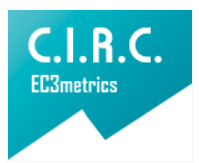Linguistic Variation of River Plate Spanish in the ITPA “Auditory Association” Subtests
Variación lingüística del español rioplatense en el subtests de “asociación auditiva” del ITPA
Main Article Content
The problem that prompted the realization of this research was that the tests that evaluate language are normativizados based on the language center of a community,
often without other sub-varieties is taken into account, which could result in "false negative". Therefore, this study focused on understanding whether the linguistic
variety influences the results of the subtest "Hearing Association" of the ITPA.
Linguistic variety is defined "when two different forms allow," say the same thing” (Álvarez González, A. 2006, p. 25). Indeed, as explained Alejandro Raiter (1995, P. 11-12),
refers to a difference of ways over standard or prestige. Linguistic variations described according to diastratic differences diatopic and diachronic. The sample consisted of
20 children from six years of the city of San Luis (Argentina). It should be remembered that the regionality of a linguistic fact is defined in relation to the existence of a
language center, in this case, the peninsular Spanish, based which has been translated this test, and was applied to children using Spanish la Plata river, the presence of
variations that influence the default results being inevitable.
Downloads
Publication Facts
Reviewer profiles N/A
Author statements
Indexed in
- Academic society
- Bogotá: Corporación Universitaria Iberoamericana
- Publisher
- Bogotá: Corporación Universitaria Iberoamericana
Article Details
Álvarez Gonzáles, A. (2006). La variación lingüística y el léxico, conceptos fundamentales y problemas metodológicos. Editorial USON. Madrid
Bernstein B. (1989). Clases, Códigos y Control; estudio teórico para una sociología del lenguaje. Ed Akal. Madrid.
Halliday, M. (1982). El lenguaje como semiótica social. Fondo de Cultura Económica. México.
Kirk, S. A., McCarthy, J. J., Kirk, W. D., Ballesteros Jiménez, S. & Cordero Pando A. (2009) ITPA. The Illinois Test of Psycholinguistic Abilities.TEA Ediciones. Madrid
Labov W. (1972). Modelos sociolingüísticos. Ed Cátedra, S.A. Madrid
Lopreto, G. (2011). Diversidad cultural y lingüística en educación. Recuperado de http://pginasdeestudio.blogspot.com.ar/2011/02/autora-gladys-lopreto-glopretoperio.html
Raiter, A. (1995) Lenguaje en uso. Enfoque sociolingüístico. A-Z Editora. Buenos Aires
Romaine, S. (1996) El lenguaje en la sociedad. Editorial Eriel, S.A. Barcelona.
Silva-Corvalán C. (2001) Sociolingüística y pragmática del español. Georgetown University Press. Washington D.C.














